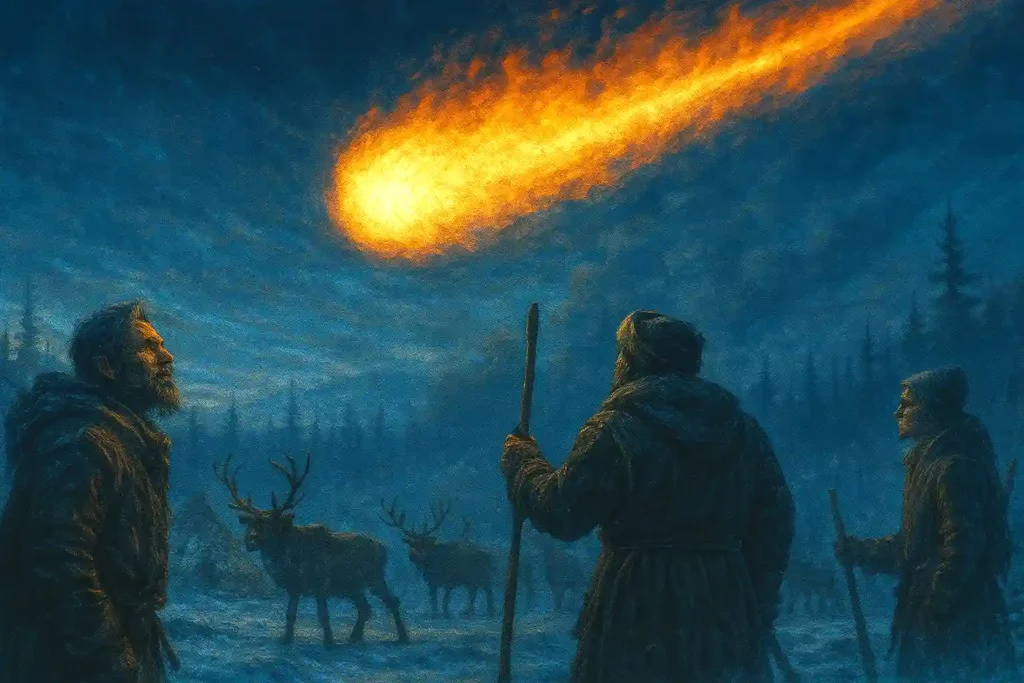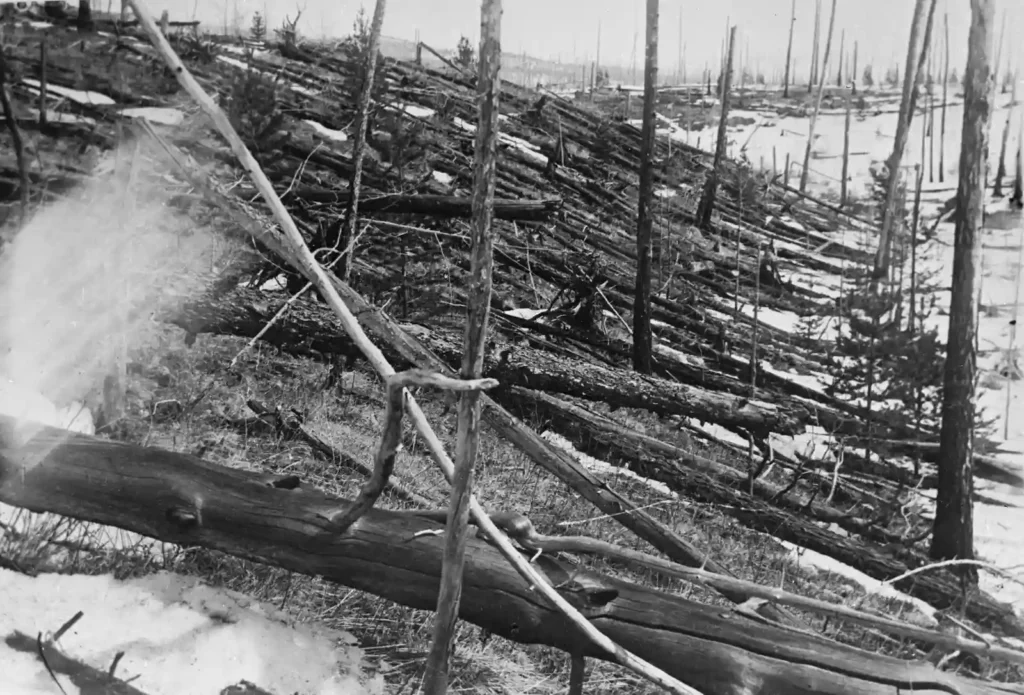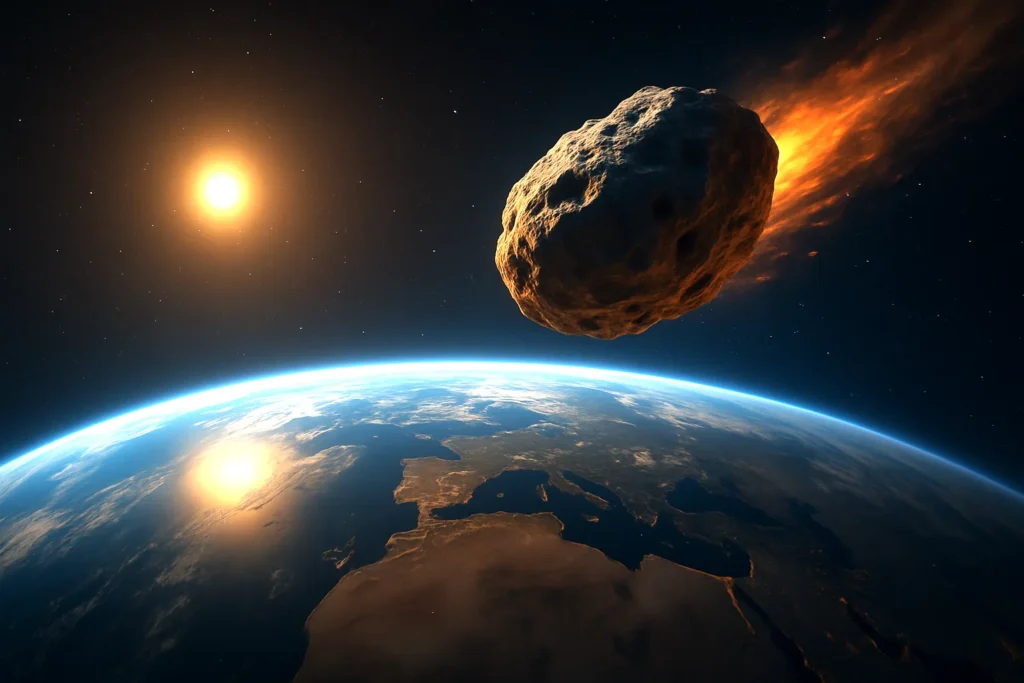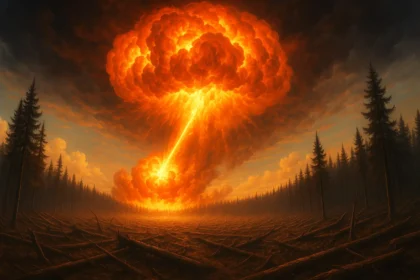A flash in the sky—and a century-long mystery
On the morning of June 30, 1908, a blinding light streaked silently across the Siberian sky. Seconds later, the sky exploded. The event, later known as the Tunguska explosion, would become one of the greatest scientific enigmas of the 20th century.
As a result, a devastating shockwave swept across more than 2,000 square kilometers of forest, toppling millions of trees as if they were matchsticks. The blast was heard over 1,000 kilometers away. At ground zero, no one survived. Yet the effects echoed as far as London.
However, there was no war. No volcano erupted. And no crater formed.
Only a flash in the sky—and a mystery that would puzzle science for more than a century.
More discoveries for your day
What was that?
The Tunguska explosion is considered the largest cosmic impact in recorded history—and perhaps the most perplexing.
But what could have caused such a powerful flash, seismic waves detected across Europe, and destruction on the scale of a nuclear bomb, all without leaving a crater?
Was it an asteroid? A comet? Or, on the other hand, something we still don’t fully understand?
Even after more than a hundred years, the answer remains shrouded in mystery.
The morning the sky exploded

Evenki herders observe the meteor moments before the Tunguska explosion. (Illustrative image)
It was 7:17 a.m. local time when the Evenki, a nomadic people native to the region, saw a fireball streaking across the sky. In seconds, a white flash illuminated everything around them, followed by a deafening series of booms.
Trees near the epicenter were scorched but still standing. Further out, they lay flat in a radial pattern, all pointing toward an invisible center. In addition, the shockwave shattered windows 65 kilometers away. The heat was so intense that people reported feeling burns dozens of kilometers from the site.
In cities like London and Saint Petersburg, the night sky glowed with a bluish hue for several nights. People could read newspapers at midnight—without a lamp.
Searching for answers

Actual photograph taken in 1929 shows the devastation caused by the Tunguska explosion, which destroyed over 2,000 km² of Siberian forest. Credit: Leonid Kulik / Public domain via Wikimedia Commons
For nearly twenty years, no one investigated the site. The area was remote, swampy, and difficult to access. Only in 1927 did Soviet scientist Leonid Kulik lead an expedition to the region.
He expected to find a crater. But there was none.
Instead, he found thousands of scorched tree trunks arranged like spokes around a central point—a spot where trees remained standing, but stripped of branches and leaves, like blackened poles.
Kulik concluded that the explosion had come from the sky. He began searching for fragments of a celestial body—but found nothing. No asteroid. No trace of a comet.
What science has uncovered
Decades later, hypotheses became more refined. Soil samples and tree resin revealed particles of nickel and iridium—rare on Earth but common in asteroids. The destruction pattern, the energy released (estimated at up to 15 megatons), and the absence of a crater all point to an aerial explosion: an airburst.
Today, the leading theory is that the Tunguska explosion was caused by a rocky asteroid, about 50 to 60 meters wide, that entered Earth’s atmosphere at over 90,000 km/h and disintegrated at an altitude between 5 and 10 kilometers.
Others argue it could have been a comet fragment—mostly made of ice, which would explain the lack of solid debris. Still, most scientists lean toward the asteroid explanation.
Why Tunguska still matters

An asteroid approaches Earth in a simulation of the Tunguska scenario. (Illustrative image)
The Tunguska event was a silent warning. Had it occurred four hours later, Earth’s rotation would have placed Saint Petersburg in the impact zone.
Faced with this invisible threat, scientists began mapping near-Earth objects. In fact, the Tunguska explosion helped inspire initiatives like NASA’s Planetary Defense Coordination Office and the recent DART mission, which successfully deflected an asteroid in 2022.
Since 2016, June 30—the date of the event—has been designated International Asteroid Day by the United Nations.
A warning from the sky
The Tunguska explosion remains without eyewitness photos, without video footage, and without a single confirmed fragment of what fell from the sky.
Still, its impact remains etched into the Siberian soil, where millions of flattened trees continue to tell a voiceless story.
If such a small celestial object could unleash that much devastation…
Are we ready for the next one?
References
Posts Recomendados
Carregando recomendações...



